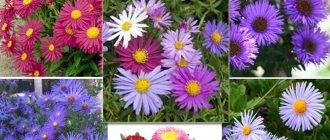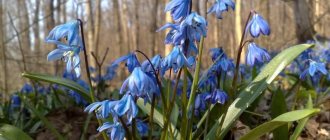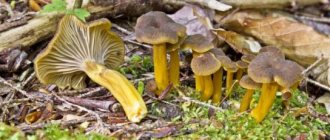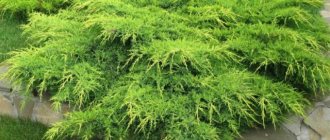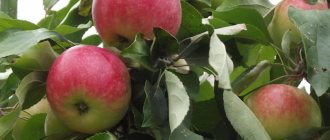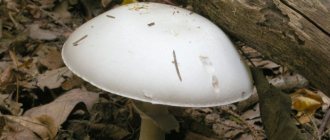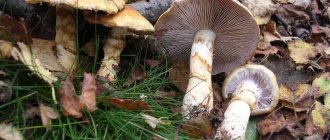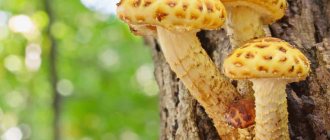Main characteristics of tumbelin
Small terry petunias of the tumbelina varietal group are the result of the work of scientific breeders from Japan. As mentioned above, they are classified as ampelous and semi-ampeloid forms. The reason for this is the ability of Tumbelin not only to grow long drooping shoots that cascade down the sides of the hanging container, but also to form a lush, rounded flower cushion. Thanks to this decorative versatility, petunias of this varietal group look great both in hanging containers and when planted in flower beds or in outdoor pots and vases. Tumbelin shoots are durable and can withstand strong winds, making them suitable for growing outdoors.
The flowers of Tumbelina petunias, unlike other double varieties, are not large in size. If the average diameter of flowers of terry petunia “Pirouette” is 10 cm, then for Tumbelina this figure ranges between 6 and 7 cm. The modest size of the flowers is compensated by the abundance of flowering, as well as a bright fragrance. The size of the petals, and the entire flowering process, is greatly influenced by the sun. The amount of sunlight and heat determines whether the thumbelins will open to their full potential or remain in a bud state. Below are the most common and popular varieties of petunias of the Tumbelin group among domestic flower growers
Recommendations from gardeners
Gardeners, when asked how to plant petunia, advise using 15-liter pots of 4 pieces. But this quantity is not recommended for the Tornado variety; it is better to have no more than 3 pieces. If you periodically remove wilted flowers and seed pods and fertilize them several times over the summer, then it will have a very beautiful shape all season long.
Many people recommend planting petunia together with tall flowers. And some use it as a monoculture in the flowerbed. Both options will look very nice.
I advise you to water once a day, but do not allow water to stagnate. Otherwise, the flower may die.
Elena Chursinova A practical gardener with twenty years of experience. I prefer organic farming and lazy gardening. ...
The most popular varieties of tumbelin
1) The variety “Priscilla” (Tumbelina Priscilla) can rightfully be considered a favorite of gardeners due to its romantic lavender color. The petals of flowers of this growth, like most Tumbelina, are covered with a network of veins of a darker, purple hue.
2) Petunia variety “Maria” (Tumbelina Maria) is reminiscent of “Priscilla” in its color scheme, but unlike most Tumbelina, its purple petals do not have characteristic veins.
3) Another variety of Tumbelina that does not have a pattern of veins on the petals is “Katarina” (Tumbelina Katharina). Its flowers are deep pink with a crimson tint.
4) The “Clara” variety (Tumbelina Clara) is distinguished by a sophisticated combination of the pink surface of the petals with scarlet veins running through it.
5) A real surprise was the variety “Eliza” (Tumbelina Eliza) - at first glance, the monochromatic pale pink flowers turn out to be not so simple in their range. The color, saturated at the edges, loses its depth as it moves towards the core of the flower, so that in the center the flowers turn out to be almost white. This unusual color combination gives this variety of tumbelin airiness and sophistication.
6) No less interesting are two other related varieties - “Anna” (Tumbelina Anna) and “Bella” (Tumbelina Bella) . Both are characterized by the presence of a white border along the edges of the petals, contrasting with the main color: in “Anna” it is a bright pink shade, in “Bella” it is a rich fuchsia. These varieties are considered one of the most beautiful and sought-after Tumbelina.
7) Petunia “Franceska” (Tumbelina Fracheska) also has a beautiful lighter-colored rim framing the edges of bright pink petals. But unlike “Anna” and “Bella”, it has blurred contours, so the color transition is soft and harmonious.
 The group of Ripple varieties includes tomblins of three different colors. The red-and-white Tumbelina Cherry Ripple, deep purple Tumbelina Damson Ripple and pink Tumbelina Rosy Ripple live up to their English name, which means "ripple" or "ripple" " The surface of their petals is covered with alternating contrasting stripes, creating the effect of wavy movement.
The group of Ripple varieties includes tomblins of three different colors. The red-and-white Tumbelina Cherry Ripple, deep purple Tumbelina Damson Ripple and pink Tumbelina Rosy Ripple live up to their English name, which means "ripple" or "ripple" " The surface of their petals is covered with alternating contrasting stripes, creating the effect of wavy movement.
9) Variety “Inga” (Tumbelina Inga) is another charming chameleon among Tumbelina petunias, like “Eliza”. At first glance, its flowers seem to be painted in a single bright scarlet hue, but upon closer examination it becomes noticeable that they have the greatest degree of saturation in the core. As they move away from the center, the petals become light red and then almost pink.
10) Tumbelina Belinda has truly luxurious dark blue flowers that give the impression of velvet. Their deep color does not fade throughout the entire season, and the shoots successfully withstand strong temperature drops.
11) Another pair of “twins” - varieties “Melissa” (Tumbelina Melissa) and “Suzanne Yellow” (Tumbeline Suzanne Yellow) . Both representatives of the Tumbelin are distinguished by a very light color with yellow tones: the color of “Melissa” is often described as a champagne shade, and the core of “Suzanne Yellow” is colored lemon yellow.
12) Truly white Tumbelina is represented by the variety “Diana” (Tumbelina Diana) : its snow-white petals sometimes give off a slight yellowishness against the background of green foliage and shoots.
13) “Margarita” (Tumbelina Margarita) can also be classified as a white variety , however, its snow-white petals have purple veins, which is why the overall tone seems closer to lilac. The veins are concentrated on the large outer petals, but the core of the flower remains white.
Pages
Questions can only be asked after registration. Please login or register.
Good afternoon to all forum members. Maybe someone knows the names of petunias.
In the first photo (the leaves are hard to see if they are smaller than those of petunia and larger than those of calibrachoa), then this is Calibrachoa SuperCal Pink Ice, and in the second I agree with D. Slava.
Ahhhhh. Which vervains are real and not photos from a foreign site. What do they eat to look so graceful and expensive?
. What do they eat to look so graceful and expensive?
Whatever they give. Here is my favorite, one bush in 12l (last year’s photo)
| The attachment |
somehow it’s not vervain at all
I INVITE YOU TO PURCHASE small packaging of chemicals, seeds, vegetatives, etc.
I keep verbena more for queen plants, but I myself prefer petunia
can you take a closer look at the flower? I have 2 pink vegetative foundlings, one grows like cascades, the second,
, with sticks, like Surfinia Hot Pink.
I INVITE YOU TO PURCHASE small packaging of chemicals, seeds, vegetatives, etc.
I bet you, we'll meet again and get drunk.
Great! Make a short detour and come and help me on the plantation
with sticks, like Surfinia Hot Pink.
On the contrary, I have never observed anything like this about her. One cutting in 20 liters and without a single pinching
| The attachment |
Natalya LPH Podgornoye (flowers and chickens)
A magnificent sight.
Yes, in general, garbage!
I was jealous))) Mine is more modest at 3.7. He also eats thrips.
oh this trippers.
I INVITE YOU TO PURCHASE small packaging of chemicals, seeds, vegetatives, etc.
here's a little bit of mine)) Petunia Tumbelina Diana Petunia Ordy Salmon-Terracotta Petunia Tumbelina Angela (in the foreground)
| The attachment |
With respect to you.
SZ with LERA. https://fermer.ru/blog/19352 - How can you talk if you have no brains? asked Dorothy. “I don’t know,” answered the Scarecrow, “but those who have no brains love to talk.” Volkov “The Wizard of the Emerald City”
Petunia Stars** Yellow-Red PETUNIA Surfinia Double Blue Star Petunia Stars** Yellow-Orange
| The attachment |
With respect to you.
Impatiens Musica Princess Pink
| The attachment |
With respect to you.
no, Angela, Priscilla was not enough for me ((Angela is pink
With respect to you.
Petunia Tumbelina Diana
Petunia Stars** Yellow-Red
But this is definitely not Yellow Red. This is Amore Queen Of Hearts. I have both.
Beauty will save the world!
definitely Tumbellina Diana, yellowish lemon balm.. I’ll say about Diana - a gorgeous variety, the flowers are large, they hold up to rain, I don’t particularly like terry flowers, but these new Tumbellinas amazed me) bright white Diana, red Inga and bright pink Katrina.. it’s a pity I didn’t get Angela .
Petunia Stars** Yellow-Red
But this is definitely not Yellow Red. This is Amore Queen Of Hearts. I have both.
I took both petunias Stars** Yellow-Red and Amore Qween Of Hearts from different sellers, they are absolutely the same, but from different suppliers, Stars** Yellow-Red from Schneider I know, Amore I don’t know from whom
here is my tumbelina Diana
Inga
Katrina
Petunia Stars** Yellow-Red
But this is definitely not Yellow Red. This is Amore Queen Of Hearts. I have both.
I took both petunias Stars** Yellow-Red and Amore Qween Of Hearts from different sellers, they are absolutely the same, but from different suppliers, Stars** Yellow-Red from Schneider I know, Amore I don’t know from whom
They have nothing in common. I'll show you tomorrow.
Beauty will save the world!
Tear out Katrina's flower - not an eye, but a little eye. A bit small, although very bright.
SZ with LERA. https://fermer.ru/blog/19352 - How can you talk if you have no brains? asked Dorothy. “I don’t know,” answered the Scarecrow, “but those who have no brains love to talk.” Volkov “The Wizard of the Emerald City”
Petunia Stars** Yellow-Red
But this is definitely not Yellow Red. This is Amore Queen Of Hearts. I have both.
I took both petunias Stars** Yellow-Red and Amore Qween Of Hearts from different sellers, they are absolutely the same, but from different suppliers, Stars** Yellow-Red from Schneider I know, Amore I don’t know from whom
They have nothing in common. I'll show you tomorrow.
I got the same ones)
Uncle Slava, this is definitely Angela, not Melissa. Regarding “Amore Qween Of Hearts” - this one was not even in the purchase, I’m comparing it on request on the Internet - mine is closer to the hybrid “Petunia Stars** Yellow-Orange” I indicated - more blurry edges of the picture, orange, etc. If you're wrong, please show us yours and let's compare.
but (.) in the catalog for 2021, Schneider shows “ Petunia Stars Qween Of Hearts Yellow-Red ” (2018-page, but there is a clear drawing, like Petunia Stars** Yellow-Red, i.e. there is no blurring of color at all. There are no more catalogs for 2021 - they have been removed (((, but there was a catalog for 2021 even in Russian, it’s a shame that it has already been removed, I can’t find it, maybe I can look at the old ones somewhere. Back in 2021 I discovered this. discussed on the pages in the Arbor page 374 No. 11201 Your photos 1 and 2 and my photo page 377 No. 11298. In the new catalog for 2018 (67 pages) you can clearly see the difference between the 2 petunias, only the name is a little different for the 2 petunias and according to them. it seems that your photos are shown on the contrary - I could be wrong. I, as a beginner, have the strong impression that as soon as some deviation appears, a split in color, immediately ** changes to different additions in the name. And it seems to me, that in the 2021 catalog the names had asterisks, and in 2021 Angela is no longer in the catalog.
Instructions for growing petunias tumbelina
Tumbelinas reproduce vegetatively, although breeders work with petunia seeds, crossing them to develop new varietal varieties. In specialized stores, tumbelins of various varieties are sold in the form of seedlings that were grown from cuttings. You can propagate petunias of this group by cuttings yourself, by cutting the cuttings at the end of summer and rooting them in containers with substrate.
Landing rules
Like other petunias, tumbelina are light-loving crops, so it is recommended to plant it on the sunny side of the garden plot, or on a balcony facing south. Partial shade is also well tolerated by these flowers. The required space for a tumbelina seedling is approximately 1-1.5 sq.m. To fill each planting hole, 3 to 7 liters of nutrient soil mixture is required. The ideal soil composition for successfully growing petunias should be light, slightly acidic and nutritious.
The optimal time for planting tumbelin in open ground or on an open balcony is May. This varietal group of petunias is able to withstand bad weather and strong winds and recover safely, which distinguishes it from other hanging varieties, whose shoots are usually damaged on windy days.
Basic care requirements
The flowering period of tumbelina occurs in the second half of summer and the first half of autumn, until October. In the southern regions, petunias of this group bloom earlier - already in June. In general, Tumbelinas are considered a late-blooming variety. You can extend their flowering period by promptly removing dried and fading flowers. Tumbelinas are extremely sensitive to watering and do best if watered twice a day on hot summer days. It is best to do this in the mornings and evenings. If it is not possible to water daily, for example, during your absence, it would be a good idea to take care of the irrigation system, otherwise there is a risk of losing moisture-loving plants.
Since tumbelins are terry varieties of petunias, they require more mineral fertilizers than simple varieties. They are especially sensitive to potassium deficiency, so it is recommended to choose complexes rich in this important element. Fertilizers should be applied strictly according to the instructions, which are always contained on the package with the mixture.
At the end of the season, you can cut the cuttings, place them in containers with substrate - over the winter they will take root and by the next season they will be ready to be transplanted into pots with soil.
